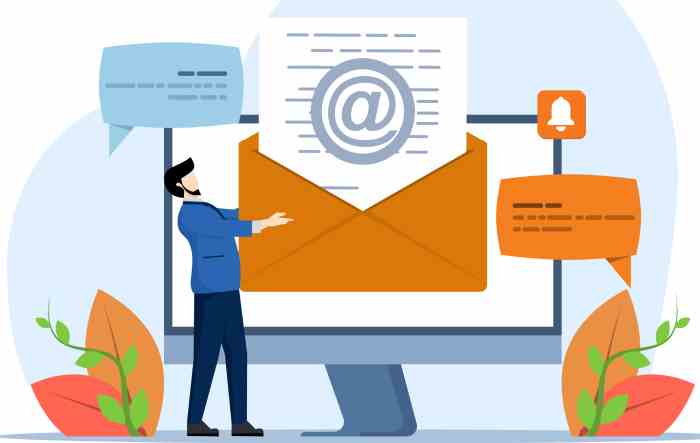DKIM Record Check: Safeguarding
Your Email Authentication
In today's digital era dominated by communication through technology, it is crucial to prioritize the security and legitimacy of emails. Failing to implement adequate protections can leave individuals and businesses vulnerable to email spoofing, phishing schemes, and various forms of cyber threats. DKIM (DomainKeys Identified Mail) serves as a pivotal technology in combatting these risks. This piece explores the significance of conducting DKIM record verifications to enhance email authentication security.
Understanding DKIM
DKIM, short for DomainKeys Identified Mail, is a security measure for email that confirms the legitimacy of messages by attaching cryptographic signatures to email headers. These signatures are then checked by the receiving mail servers to verify their authenticity.
By safeguarding against email spoofing and phishing attempts, DKIM guarantees that messages have not been altered during transmission and indeed come from the declared sender's domain. The adoption of DKIM bolsters email security and fosters confidence among recipients.

The Role of DKIM Records
DKIM records, which are stored in the DNS system, hold public keys necessary for authenticating DKIM signatures. The sending domain makes these records available, and recipient mail servers consult them when processing incoming emails. By examining DKIM records, recipient servers can validate the legitimacy of emails purporting to originate from a particular domain. Maintaining precise and accessible DKIM records is essential for verifying email authenticity efficiently and thwarting spoofing attempts.
Conducting a DKIM Record Check
- Extract DKIM Signature: The DKIM signature is retrieved from the email header by the receiving mail server.
- Retrieve DKIM Public Key: Following that, the server proceeds to fetch the DKIM public key from the sender's domain's DNS records.
- Verify Signature: By utilizing the DKIM public key, the server ensures the legitimacy of the DKIM signature, suggesting that the email has not been altered during transmission and probably came from the purported sender.
- Take Action: After confirming the DKIM verification, the recipient's mail server is able to make decisions on how to handle the email, including whether to deliver it to the recipient's inbox or classify it as spam.
Benefits of DKIM Record Checks
Implementing DKIM record checks offers several benefits for both senders and recipients of emails:
- Enhanced Security: DKIM record checks play a crucial role in thwarting unauthorized spoofing and phishing attempts by confirming the legitimacy of email senders.
- Improved Deliverability: Messages that bear legitimate DKIM signatures have a higher chance of reaching recipients' inboxes instead of being flagged as spam.
- Brand Protection: DKIM safeguards your brand's credibility and trustworthiness by verifying that only authentic emails are associated with your domain, thereby preserving its reputation and integrity.
- Compliance: Various regulatory guidelines, such as GDPR, require the adoption of email security protocols like DKIM to safeguard confidential data and maintain adherence to regulations.
Challenges and Considerations
While DKIM record checks provide significant benefits, there are also challenges and considerations to keep in mind:
- Complexity: The complexity of handling DKIM records and ensuring their proper configuration can pose challenges, particularly for organizations managing multiple domains or dealing with high email traffic volumes. Collaboration between email administrators and DNS managers is essential to maintain consistency and accuracy in this process.
- Key Rotation: It is important to regularly update DKIM keys for security purposes. Nevertheless, the process of key rotation can be complex, as it requires a seamless transition to avoid any interruptions in email delivery or mistakenly triggering spam filters.
- Third-Party Services: Companies using external email service providers may encounter difficulties when setting up DKIM. It is crucial for them to confirm that their providers are DKIM-compatible and follow proper protocols for managing keys and publishing records.

Best Practices for DKIM Implementation
- Proper Key Management: Create robust DKIM keys and effectively handle them to thwart unauthorized use or abuse. Enforce key rotation protocols to uphold security and reduce the likelihood of key breaches.
- Consistent Configuration: Maintain uniform DKIM setup for all domains and email servers in your organization by properly configuring DNS records and ensuring that email servers sign outgoing messages with DKIM signatures consistently.
- Monitor and Analyze Results: Consistently check DKIM authentication outcomes and examine any errors or inconsistencies. Identify the underlying reasons for failures and implement necessary solutions to address problems swiftly.
- Educate Users: Teach both employees and users the significance of DKIM in safeguarding against email threats, urging them to stay alert and promptly report any suspicious emails that manage to evade DKIM verification. Uncover additional information on the DuoCircle website.